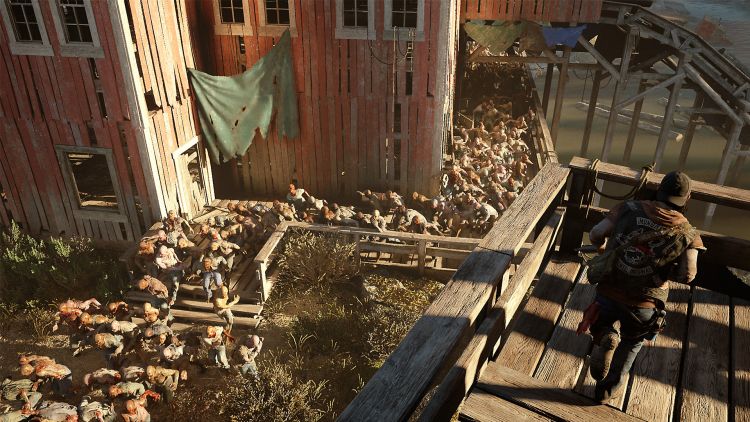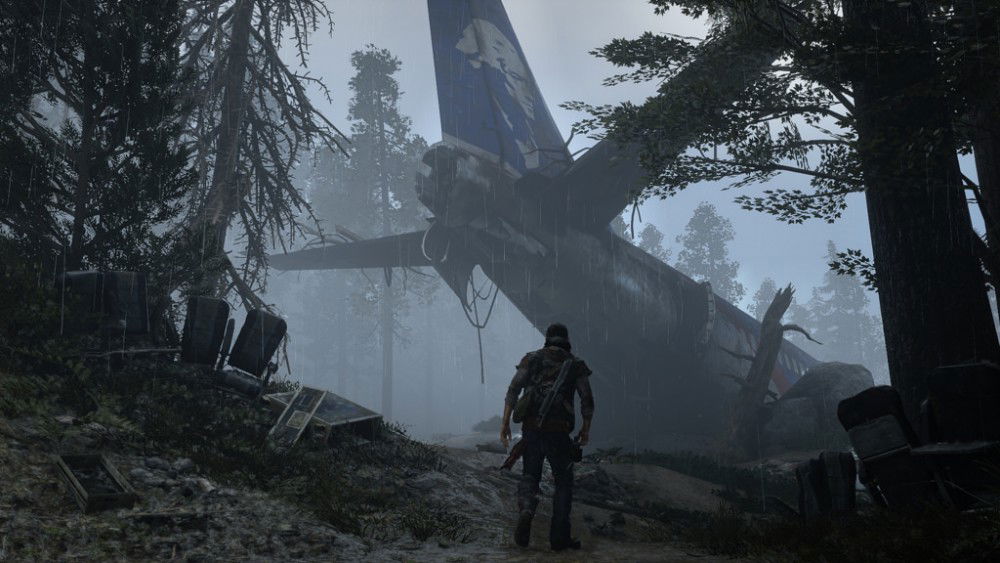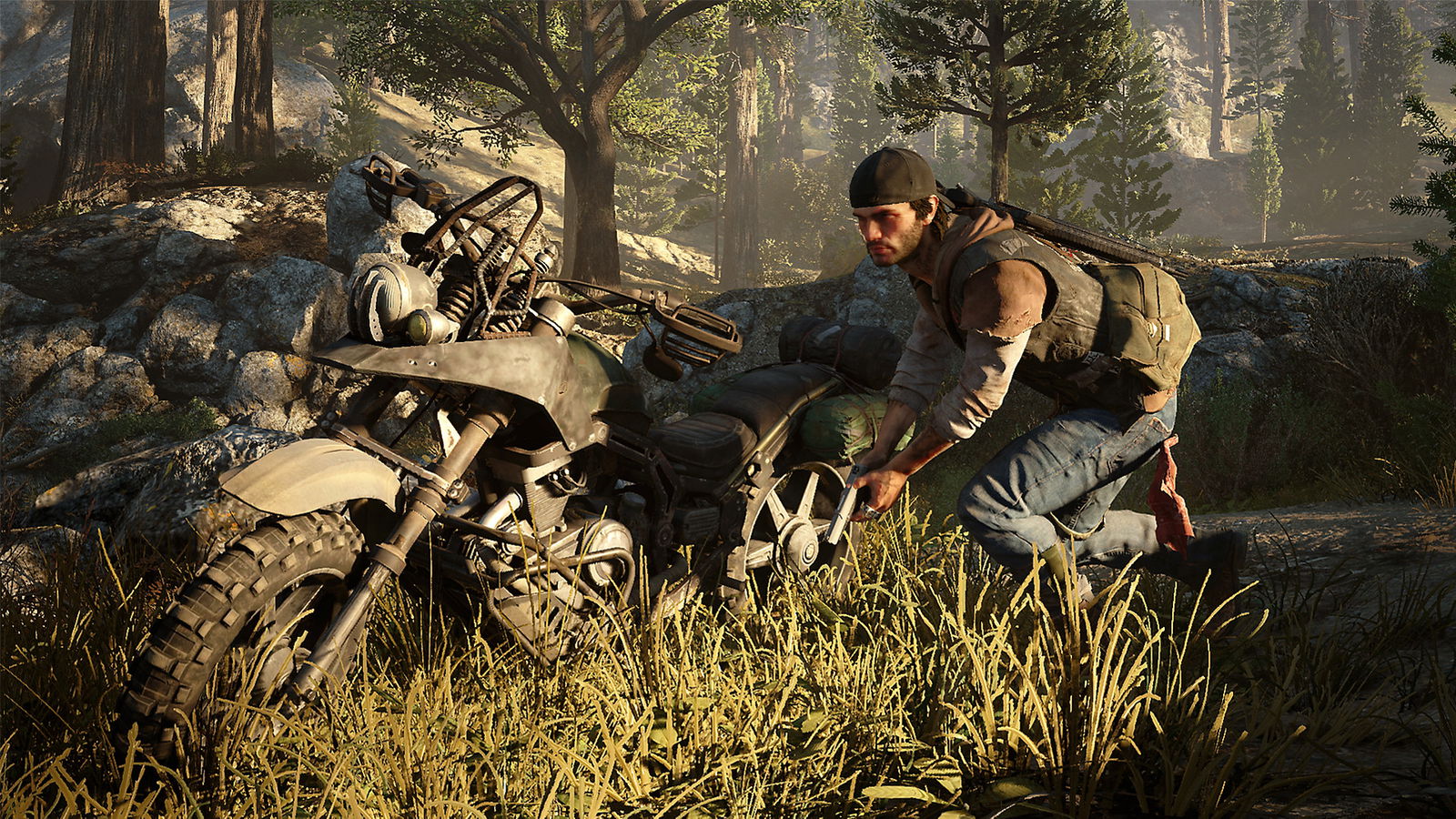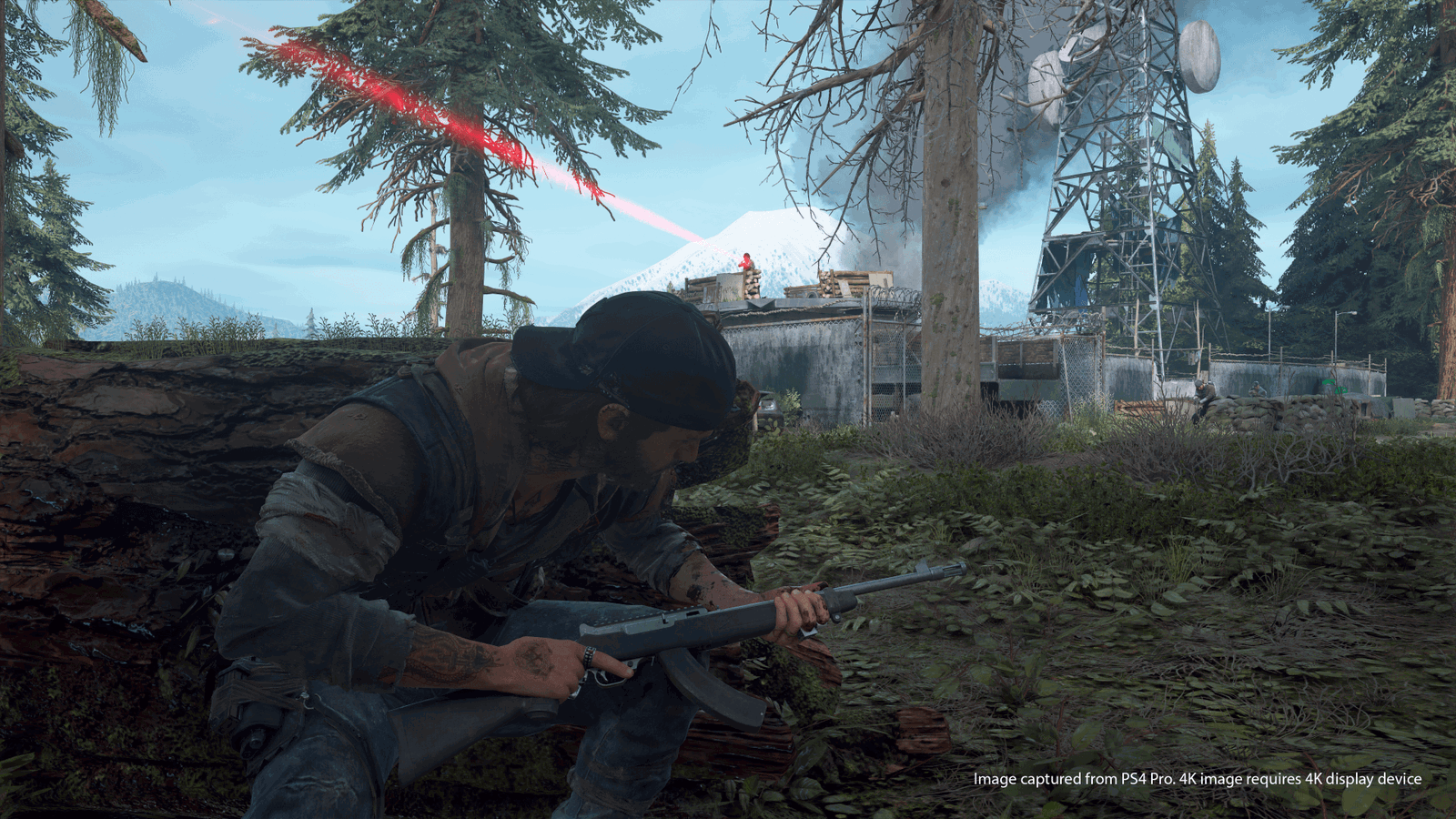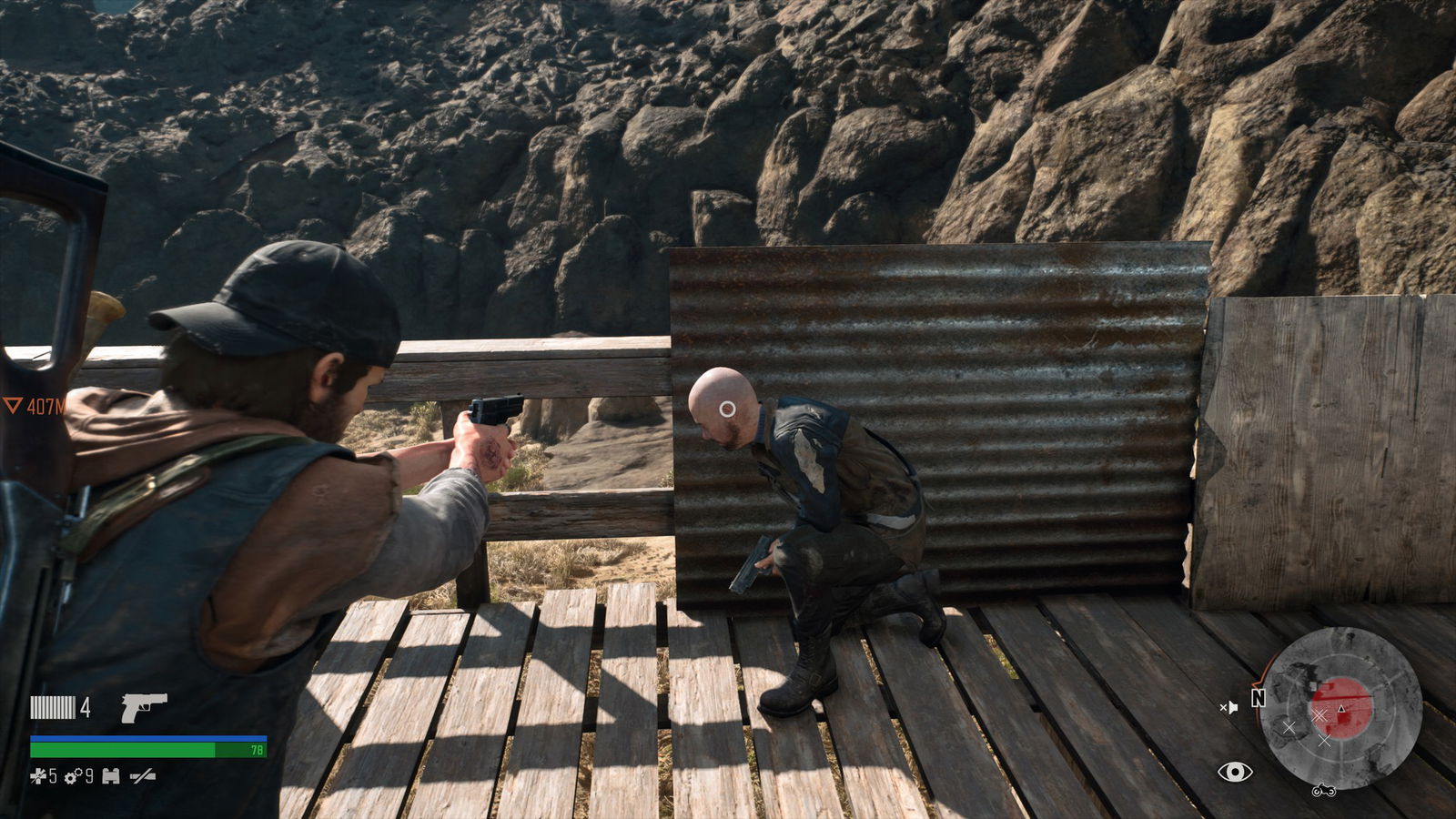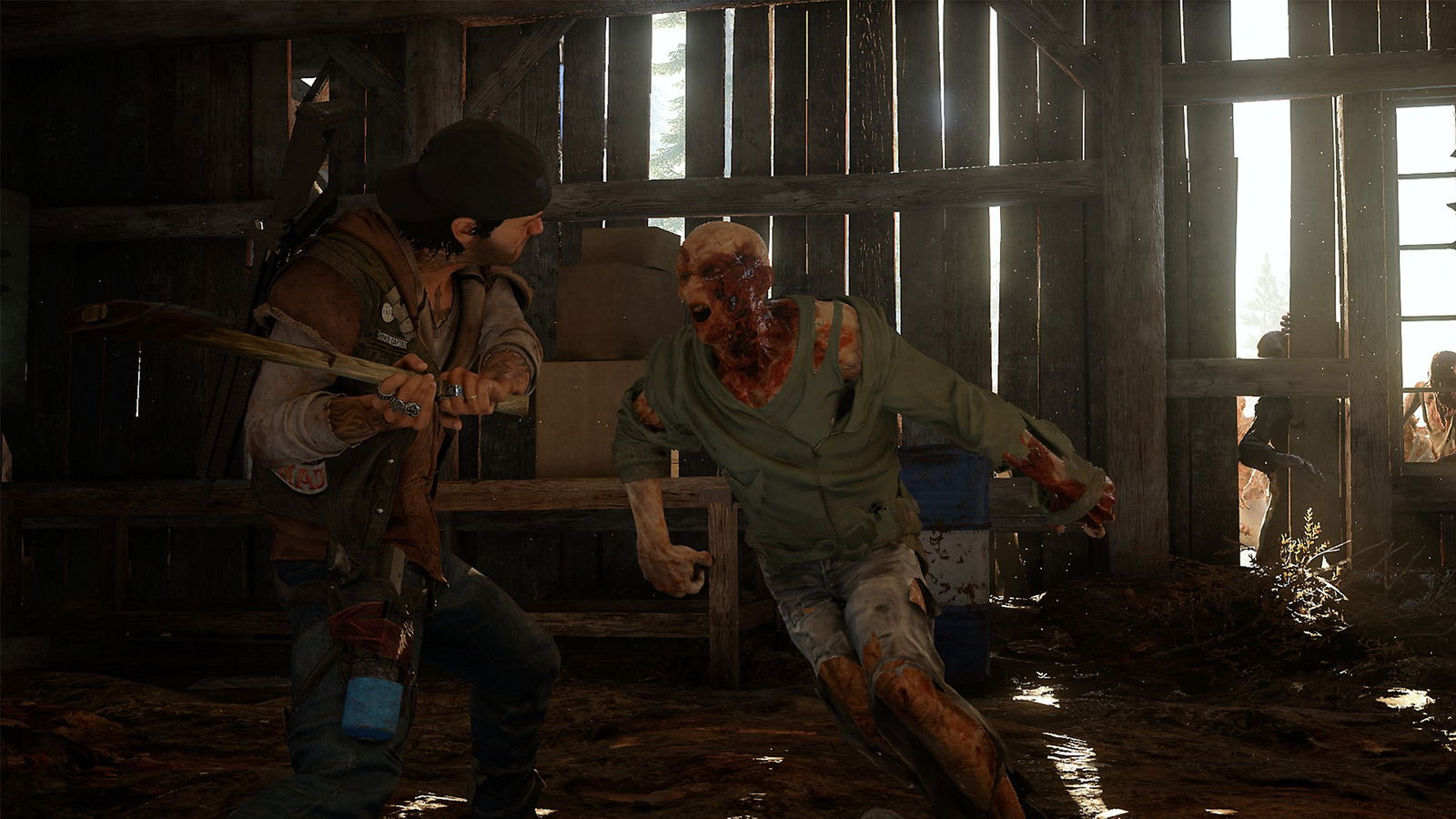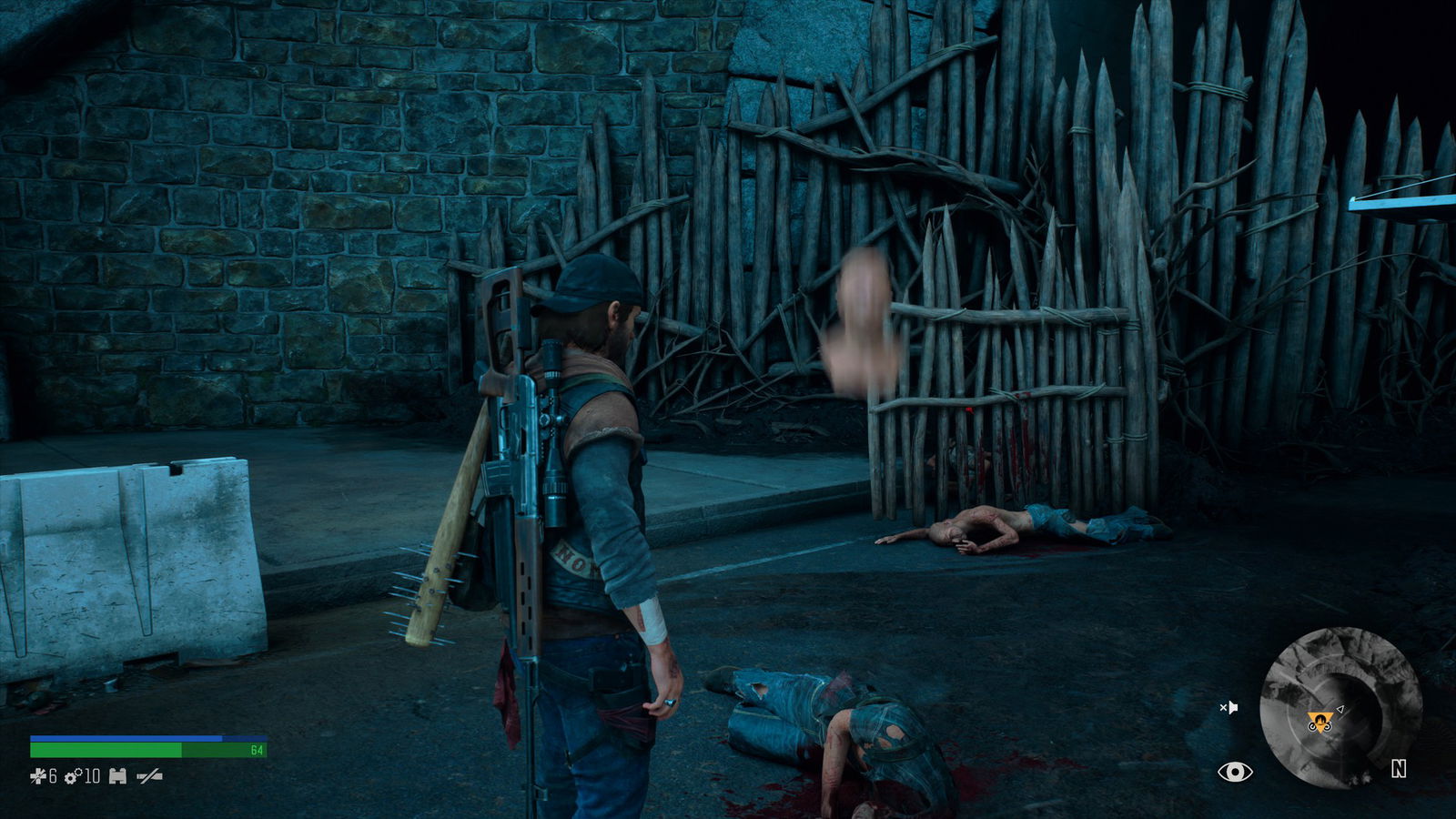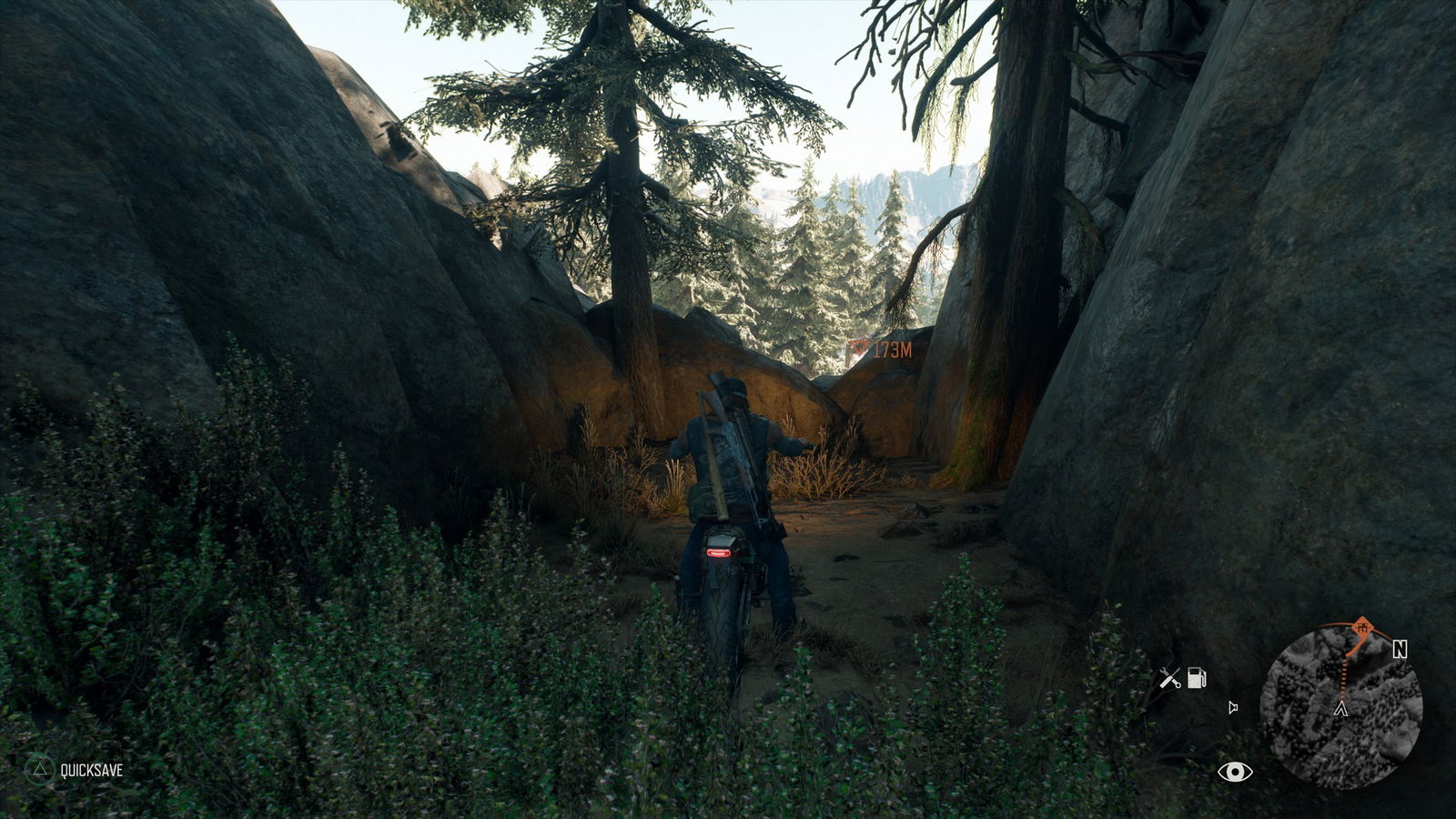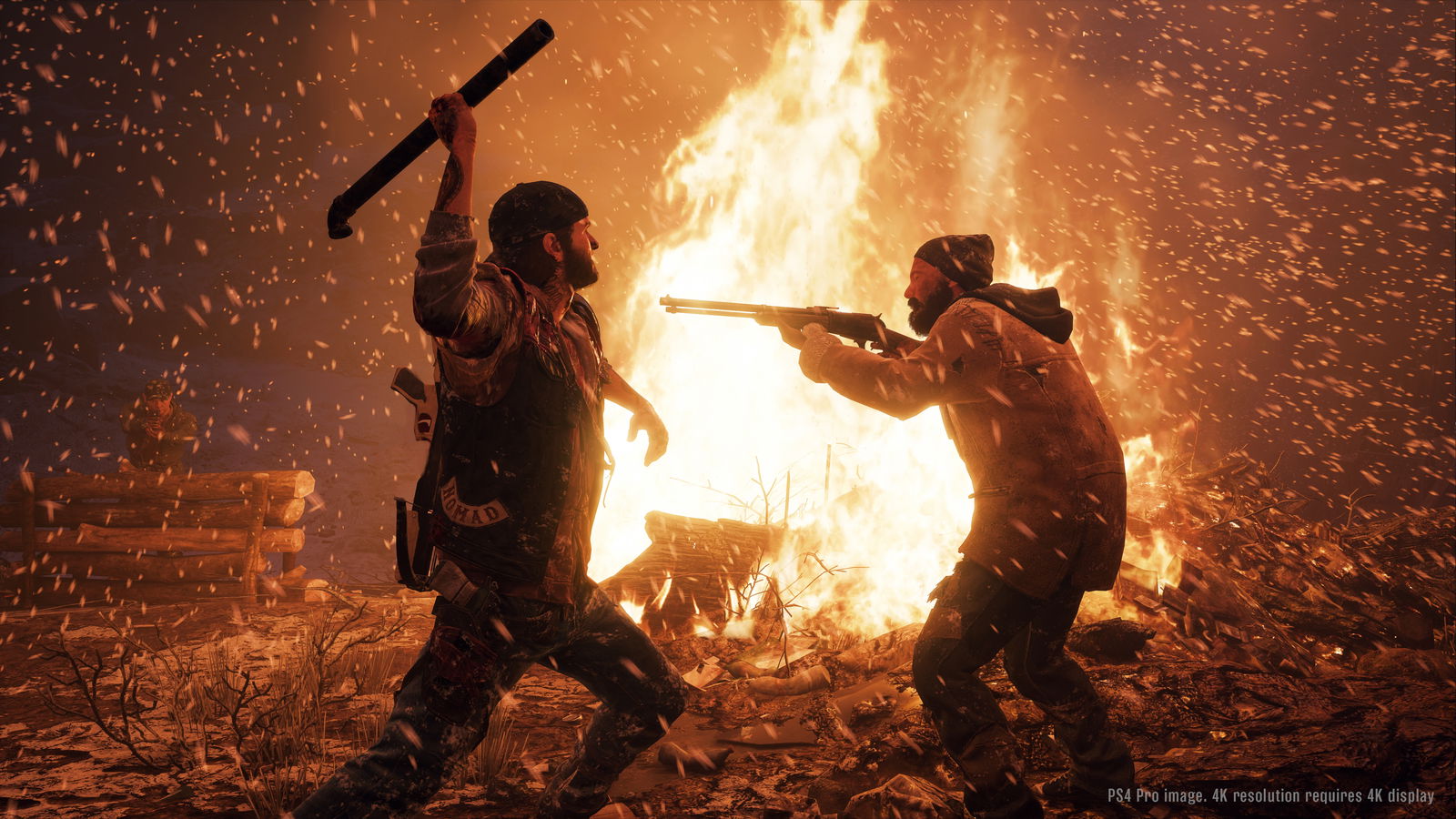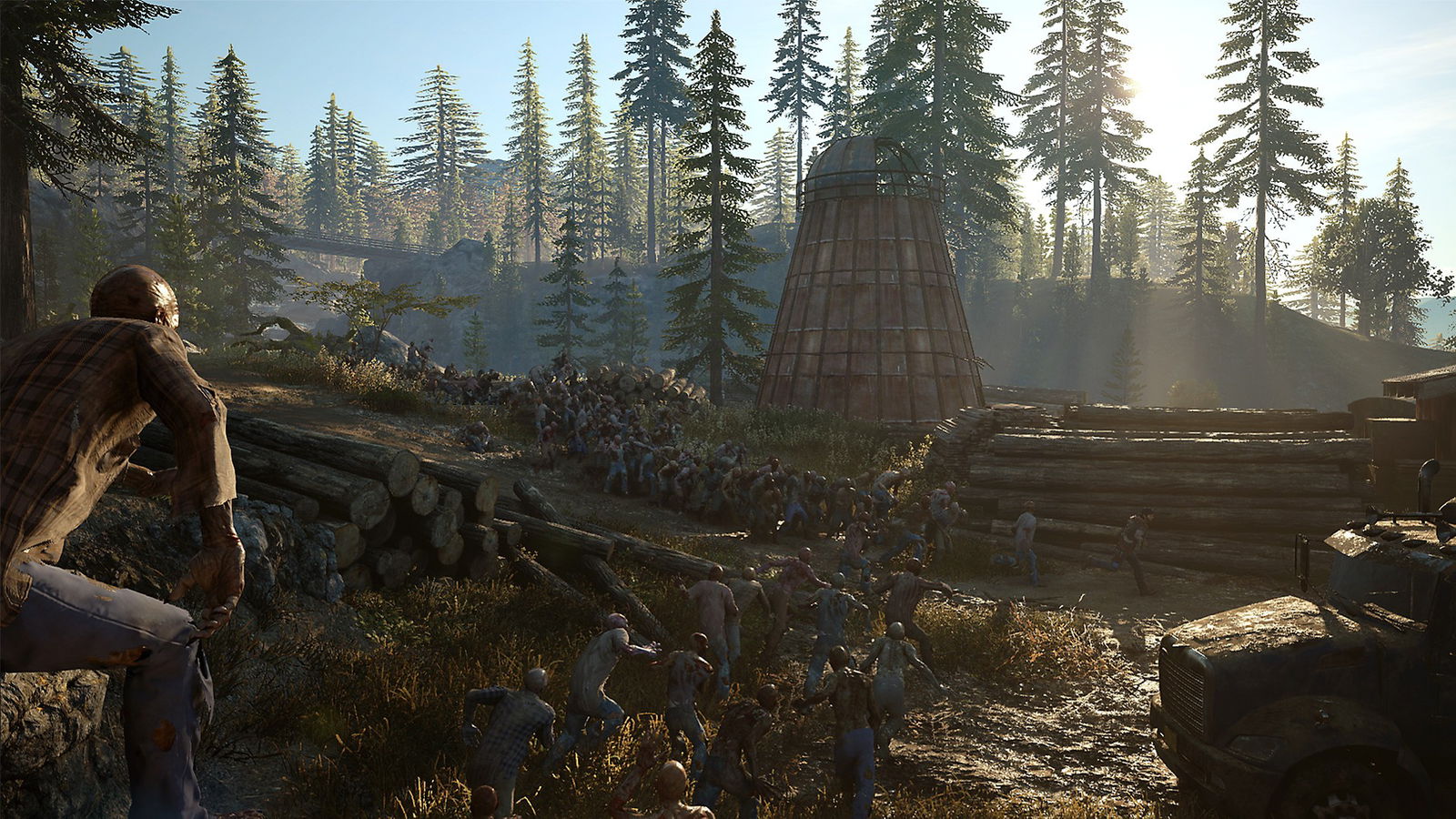Sony’s first-party studios have provided fantastic experiences over the past few years. God of War told one of gaming’s most compelling stories ever, Horizon Zero Dawn featured a gorgeous open world with an intriguing mystery at its core, and Marvel’s Spider-Man delivered an incredible superhero experience, raising the bar for all comic book games yet to come. These titles brought with it tight, refined gameplay, deep and complex storytelling, and layers upon layers of polish. After spending 40-50 odd hours with Days Gone, the latest in the PlayStation 4’s exclusive lineup, it pains me to say that the game fails tremendously in all of these regards, resulting in a hollow, overly drawn-out experience that feels like it came straight out of 2012.
Game Name: Days Gone
Platform(s): PlayStation 4 (Reviewed)
Publisher(s): Sony Interactive Entertainment
Developer(s): SIE Bend Studio
Release Date: April 26, 2019
Price: $59.99
Days Gone is an open-world zombie game in which you play as Deacon St. John, a biker turned bounty hunter who travels around post-apocalyptic Oregon with his buddy Boozer, who used to ride with him in their motorcycle club. Now, in a world full of outlaws and zombies freakers, Deacon and Boozer struggle to get by and find a purpose in this new world. About two years into the apocalypse, Deacon finds out his wife, Sarah, who was presumed dead, might actually be alive, and this sets Days Gone‘s roughly 40-hour story in motion.
Throughout your time with Days Gone, you’ll go through the motions of a typical open-world shooter. You’ll ride around vast environments, clearing camps and following waypoints, all the while stopping to pick up a collectible or two. Days Gone‘s gameplay structure is nothing revolutionary, quite the opposite, actually. It’s stuff we’ve seen in countless other open-world games, and there isn’t much here to help it stand out from the crowd.
What does separate Days Gone from the competition is the bike? Deacon’s motorcycle is how you get around the world of Days Gone, and over the course of the story, you develop an attachment to it. While it may start slow and fragile, you can upgrade just about every part of it from the engine to the frame, making it slightly faster and just a bit sturdier. Even with fully maxed out parts, the bike never felt great to ride. It was always a tad too slow, and it can’t take too many hits either. A small crash will fling Deacon off of the bike and cause significant durability damage, requiring you to expend precious scrap to get it up to snuff again. This, paired with poor handling and physics, made the bike a pain to ride at first, but I slowly got the hang of riding as I spent more time with Days Gone, making the experience a little less frustrating after 10 or so hours.
Fuel, on the other hand, remained a problem throughout the entirety of Days Gone‘s campaign. The bike guzzles quite a bit of gas, so you’ll need to keep an eye out for fuel canisters or gas stations (some of the pumps still have fuel in them). What was intended to be a tense resource management situation actually ends up being little more than an annoyance. Gas is everywhere in this game. In the back of trucks, in houses, in camps, just about anywhere that isn’t the middle of nowhere will have fuel available for you. Because of this, I was never worried about my fuel consumption. Anytime my gas meter got below half, I wouldn’t even have to divert my path to refuel.
As a whole, the fuel system feels pointless as a result, never forcing me out of my way to gather resources, instead just making me stop and waste time on the way to my next objective. I ran out of gas only twice during my entire playthrough, and neither time felt consequential. I didn’t feel like I was stranded and desperately needed to locate fuel. I only had to walk maybe 50 feet to find a full gas canister. It was never a challenge to refuel. It just added to the already huge amount of tedium Days Gone subjected me to.
The novelty of being a post-apocalyptic biker wore off very quickly, and I found myself fast traveling practically everywhere instead of riding the open road. Fast travel still requires fuel, though, but considering I fast traveled to camps most of the time for missions (camps that let you refuel and repair your bike for a modest fee), I never had to worry about gas. You can’t just fast travel wherever you like, however. You have to clear any freaker infestations that might stand between you and your chosen destination.
Freaker infestations are just one of the side activities Days Gone provides, and they’re the only ones I enjoyed. An infestation zone will have a handful of freaker nests in it, and these nests have to be burned out with molotovs, incendiary crossbow bolts, or explosive canisters. When a nest is ignited, whatever freakers were sleeping inside will emerge and attack Deacon if they see him. Infestations are thrilling games of hide and seek. I loved tossing molotovs into nests and then dashing for the nearest hiding spot to plot my move to the next nest. The game recommends you clear nests at night because more freakers are sleeping inside the nests during the day (they’re nocturnal), but the difference in freaker count was negligible, so I just burned nests whenever I came across them.
It was never that easy, though. Being set in the post-apocalypse, Days Gone limits your supplies, forcing you to scrounge and make do with limited resources. In most other games, this isn’t a big problem, but Days Gone requires certain items to accomplish certain tasks, and crafting materials for those items are few and far between. It frustrated me to no end to come across an infestation zone with five nests with only one molotov in my inventory. Usually, the game will populate the immediate area with materials needed to craft what you need, but it was rarely enough. Plus, the crafting materials for molotovs are similar to those for bandages, so I had to frequently choose between not dying or completing my objective, which was never a fun or interesting choice to make. It’s not that a game like Days Gone shouldn’t stretch resources thin; it’s just that certain essential items have ingredients that are not only incredibly rare but also used for other necessary items.
NERO (Days Gone‘s equivalent of FEMA) checkpoints are another side activity unique to Days Gone, but unfortunately, they boil down to the same thing. Each checkpoint Deacon stumbles across will undoubtedly be without power, which forces you to find a nearby gas canister to refuel the generator. After refueling the generator, a panel will be missing a fuse, so you have to use Deacon’s tracking skills and follow a dotted line to a “hidden” fuse. Then you are rewarded with an upgrade to either your health, stamina or focus (bullet time). Don’t forget to climb onto the roof and cut the speakers’ wires, so you don’t attract any freakers. Repeat ad nauseam.
Days Gone‘s third group of side activities are bog-standard enemy encampments. Whether they’re marauders, anarchists, or any other of Days Gone‘s generic bad guys, each encampment plays out the same. Kill everyone in the camp and then locate their hidden bunker, which has a map of the area inside. These are rarely compelling, providing little to no reward in return for all the wasted ammo and supplies. Friendly encampments will occasionally request that Deacon clear an enemy camp as a side quest, but the fact that the main questline showers you with credits and experience makes doing these side quests relatively pointless.
These encampments are made worse by Days Gone‘s poor shooting. I could never get Deacon to aim precisely where I wanted him to, especially in close quarters, which resulted in multiple frustrating deaths. Enemies are spongy and take multiple shots to go down, which, when paired with their almost pinpoint accuracy, made for slow and tedious firefights. That is, whenever the enemies actually chose to engage me. The AI in Days Gone is downright braindead most of the time, with enemies sometimes not acknowledging my presence even with a gun to their head. Other times they’ll charge me headfirst down hallways or challenge me around corners in a single file line, which is acceptable for the freakers, not supposedly intelligent humans.
Being a game based around bikers, Days Gone includes several bike chase segments. These segments usually occur at the end of a bounty hunting side mission and involve Deacon either shooting to kill the person, which ends the chase fairly quickly, or shooting to disable their bike, which takes forever. Shooting from the bike is an exercise in boredom. Rather than manually aiming and firing your weapon, you press one button to lock on and then shoot when you get close enough to the target. You also have to space out your shots because your aim gets inaccurate if you shoot quickly. In combination with Days Gones slow bikes, this makes bike chase segments almost laughably bad, feeling less like thrilling high-speed encounters and more like elderly scooter combat.
Melee combat is a nice alternative to the game’s bad shooting. Melee weapons can be crafted or found in the world, but they break fairly quickly. These weapons can be repaired with scrap, but you won’t have enough to be able to rely solely on melee combat. Still, a baseball bat or a machete comes in handy in a pitch and allow for quieter encounters that don’t draw in as many freaks.
Luckily you can avoid combat altogether in most situations thanks to Days Gone‘s rudimentary but functional stealth system. All the typical stealth tropes are there, hiding in tall grass, throwing rocks to distract enemies, you name it. The game’s dumb AI actually makes stealth super easy. Enemies take a couple of seconds to register that they’ve spotted Deacon, so you don’t have to be too careful when you’re sneaking around.
I can’t overstate how braindead the AI is and how incredibly forgiving this makes stealth. I put a bear trap down in a clearing and then threw a rock at it, which caused a nearby enemy to walk straight into the bear trap. When he yelled for help, another enemy walked straight into the second bear trap I had placed right next to him, completely in the open. The freakers seem smarter than humans most of the time, and they’re not exactly the brightest either.
Alongside poor controls and bad AI are a myriad of technical issues. Bend has put out a ton of patches that address some of the issues that plagued the game at launch, but a good number of problems remain. Framerate drops are incredibly common and range in severity from small stutters to near slideshow quality. The game even froze on me for a couple of seconds at one point. At another point, cutscene audio desynced with what was happening on the screen, forcing me to completely close and restart the game. Vendors would greet Deacon multiple times in a row, and quest givers would radio Deacon while he was standing right in front of them. The game crashed on me during a pivotal cutscene near the game’s conclusion. There’s even awful pop in when driving around. The bugs are hard to ignore when playing Days Gone simply due to the frequency with which they occur.
Throughout your time with Days Gone, you’ll come across several friendly camps that will host the majority of the game’s story missions and side quests. Each of these camps has a weapons shop, a mechanic for your bike, pretty standard fare for this kind of game. What sets Days Gone‘s camps apart is the trust system. You have a trust level with every camp on a scale of 1 to 3, and as you increase trust, more options become available to you in shops. Trust is increased by completing missions (both story and side missions) and turning in “bounties,” which are the ears of fallen freakers. Not only is trust unique to each camp, but credits are as well. This results in many scenarios where you’ll be trusted at one camp and want to buy a powerful weapon or bike upgrade, but you don’t have any credits at that camp even though you have thousands saved up elsewhere. Trust increases at an astonishingly slow pace, relegating the game’s more potent upgrades and gear to well into the endgame. To add insult to injury, Days Gone quite literally provides the game’s best weapons to you on a platter at a late point in the story, making the grind toward maxing out trust feel pointless in the end.
Days Gone‘s progression system feels half-baked as well. Earning enough experience will net you a skill point, which you can then spend to upgrade melee, ranged, or focus abilities. Unfortunately, the desirable skills are locked to higher skill tiers, forcing you to waste points on unwanted skills to unlock better ones. The better skills aren’t even worth all the work it takes to acquire them, and any time I got a skill point, I just haphazardly selected a skill without much thought.
The open-world isn’t much better either. Thankfully the world isn’t as gargantuan as the ones found in Assassin’s Creed Odyssey or Red Dead Redemption 2, but even with a smaller, more compact space, it still feels barren and empty. There’s a whole lot of nothing in Days Gone‘s version of Oregon, and you’ll be seeing the same empty houses, abandoned cars, and quiet forests for the majority of the game. There are some questionable design choices, too, with certain would-be shortcuts ending abruptly with dead ends and deadly falls not telegraphing their presence at all, causing me to ride Deacon off a cliff more times than I’d like to admit.
Even though it’s desolate for the most part, Days Gone’s world is absolutely gorgeous. The lush forests of the Pacific Northwest never failed to take my breath away, and the dynamic weather is a sight to behold. Snow falling and accumulating over time or heavy rainfall paired with distant thunder do a lot to add to the game’s atmosphere. Character models are detailed and well animated for the most part, but some minor NPCs and vendors have lip-synced issues and don’t really move their mouths too much when speaking. Still, it’s a minor complaint when the rest of the game looks this good.
Even though the game is plagued with technical issues and gameplay problems, the primary focus of Days Gone is its story. Bend pushed this game as a narrative experience first and foremost, and while the story does reach some interesting highs, the overwhelming majority of it falls flat. At certain parts, I found myself genuinely curious about what would happen next, but those moments were spread much too thin over the lengthy narrative. The game’s length is at the root of most of its problems, which is made incredibly apparent in the story. So much of it drags, tasking you with busywork, simplistic combat encounters, drawn-out rides, and even trailing missions.
When the story slows down, it doesn’t pick back up for hours, leaving you with dull, repetitive missions to get you from story beat to story beat. Days Gone‘s lifeless mission design was not enough to keep me gripped in between the game’s more exciting moments, and I found myself wanting to quit playing Days Gone multiple times, praying for the game to either end or at least do something interesting. The bulk of the missions throughout the campaign involve shooting nameless, faceless bad guys or going for rides with dry, uninteresting characters. There’s even a recurring questline involving eavesdropping and instant-fail stealth sections, and those are never fun.
Even the boss fights fail to create any tension or drama. Stronger special infected are normally introduced via a boss encounter, but they’re not terribly strong, and I was even able to down one with a single crossbow bolt because it hadn’t seen me yet. The game’s final boss is strongly reminiscent of the ending of the first Uncharted game. You fight waves of enemies until you reach the target, only for you to move from cover to cover to get closer, and the entire extremely disappointing sequence is over in seconds.
This boss fight probably would have been more climactic if Days Gone hadn’t spoiled its own ending. The story in Days Gone is divided into “storylines,” which are accessible via the menu. After completing a mission, you’ll see which storylines it progressed and by how much. A mission for Boozer, for example, will progress “He’s My Brother,” which is Boozer’s main storyline, by 4%, but because it’s also somewhat related to Sarah, it’ll progress “I Remember” by 2%. The title of a certain storyline and its accompanying icon completely spoils a betrayal that happens later in the game. This isn’t that big of an issue considering Days Gone‘s writing is completely predictable, but the storyline system feels complicated and unnecessary, and it actively ruins some of the game’s plotlines.
Days Gone is at its best during its many cutscenes, and even then, only a handful truly stand out. Deacon and Sarah’s relationship, told primarily through flashbacks, was a highlight for me, but the flashbacks aren’t presented in chronological order, and they’re spaced out with hours of gameplay in between, making them feel disjointed and awkward. There also aren’t enough of them. Some of the scenes refer to events that are never presented to the player, making me feel like I had missed a few flashbacks. Regardless, Deacon and Sarah absolutely steal the show whenever they’re on screen.
This is partly due to the cast’s outstanding performances. Sarah, Boozer, and the rest of the supporting cast are well-voiced and acted, but Sam Witwer’s performance as Deacon is almost enough to carry the game independently. Deacon is, without a doubt, the most fleshed out character in Days Gone by a mile. His emotional scenes bring the necessary weight to garner a reaction, and his more lighthearted scenes actually got a chuckle out of me now and then. Deacon was just about the only character I found myself caring for throughout my time with Days Gone, and Witwer did a phenomenal job in bringing his character to life.
Even outside of cutscenes, Deacon finds ways to express himself. You see, Deacon never really shuts up. While it was endearing at first, it got old very quickly. Deacon repeats the same few voice lines like a broken record during combat, muttering and whispering to himself like a madman. He’ll also comment on things in the open world, letting you know if enemies are nearby or if a point of interest is close, but the range of detection is much higher than you can actually see, resulting in Deacon saying things like “A bear, gotta be careful” or “An ambush camp, I’m gonna kill every last one of them” when I’m in the middle of nowhere. The intensity with which Deacon delivers these lines is hilarious, and it robs combat of any gravity it might have had. The voice lines are also out of place in some scenarios. That boss fight I mentioned earlier where I stealth killed it with one crossbow bolt? Deacon immediately radioed his friends and was completely out of breath, as if he’d just barely managed to scrape by, even though he hadn’t broken a sweat.
Deacon kept me interesting in the overarching story of Days Gone for a while, but it’s just too long for its own good. The story peaks a little under halfway in, but then it introduces a bevy of new characters and locations, each duller than the last. Each of the game’s interesting plotlines resolves themselves in the first half, leading the second half to feel unnecessary and bloated. I cared about Deacon, Sarah, and Boozer, but the Deacon and Sarah plotline runs out of steam at the midpoint, and Boozer practically ceases to exist until just before the climax.
Even the mission structure runs out of ideas toward the end. The last act of the game is the worst in terms of both story and gameplay. Deacon and his friends have to prepare for the game’s final battle and to do this, Deacon has to clear generic camps and fight hordes of freakers. They don’t even try to justify these missions within the narrative. Deacon literally gets a radio call that marks three camps on his map, and each is a different named mission for some reason, even though nothing is backing them up narratively. There are only 10 enemies at each camp, too, making the entire sequence feel like nothing more than busywork. The enemies also get a lot spongier toward the end, wearing protective armor and armed with military-grade weapons, adding to the already tiresome combat. The horde missions have some story backing them up, but not much. Deacon needs an item, and when he gets there, there’s a horde. The surprise wears thin when this happens over and over again. At least the hordes are interesting mechanically, but even they feel shoehorned in.
Hordes are one of the selling points of Days Gone, massive crowds of freakers that stumble and climb over one another as they desperately try to reach Deacon. Challenging a horde is a rush of adrenaline the first few times. Each horde has a collective health bar, and you have to whittle their health down by leading them through chokepoints and using molotovs and explosives, both crafted and environmental. It’s a mad dash to locate the next thing you can utilize to put a dent in the horde, and hearing hundreds of freakers slowly catch up to you never ceases to be thrilling. Unfortunately, the hordes are relegated to the last few hours of the game, and after you’ve faced a couple, things start to get repetitive. It also doesn’t help that the game fills your map with horde icons in the game’s final hours, making their inclusion feel rushed. There’s also no reward for hunting down the rest of the hordes after completing the story other than doing it just because. The game chugs during horde encounters as well, even more so than in regular gameplay. The framerate dips heavily, making the quick decision making and skillful traversal needed to tackle hordes all the more difficult.
Days Gone is very obviously inspired by games that have come before it. Its inspiration from Red Dead Redemption is apparent through its musical sequences, and the relationship Deacon has with his bike. Its inspiration from The Last of Us is apparent through its slower combat and its focus on a more personal tale in the apocalypse. Unfortunately, Days Gone fails to reach the highs of the games it draws from so much, and it ends up feeling like a cobbled together experience that’s full of good ideas but ultimately stumbles in their execution. That’s not to say Days Gone is a bad game. It’s just not a particularly good one. Those who are already interested in this post-apocalyptic biker adventure will find some enjoyment in its 40-50 hour ride, but those on the fence should stay away. Days Gone is a completely missable title, and even though it’s clear Bend Studio had some great ideas, none of them are implemented particularly well.
Summary
Days Gone is so clearly inspired by other pillars of video game storytelling, but it fails to meet the standards set forth by those that came before it. While there are good ideas and a lot of heart in Days Gone, it ultimately stumbles in execution and is plagued by a number of technical issues, making it hard to recommend Bend’s post-apocalyptic biker adventure.
Pros
- Beautiful world
- Fantastic performances
Cons
- Barren, empty world
- Weak supporting characters
- Awkward combat
- Half-baked survival mechanics
- Technical issues and bugs
- Pacing issues


